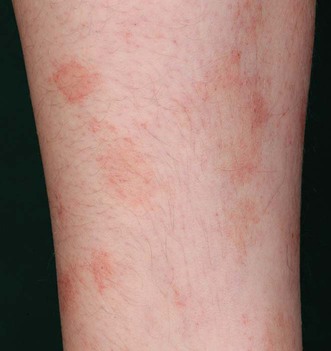Capillaritis (pigmented purpuric dermatoses)

Management strategy
 Drugs (14% in one series), e.g., acetaminophen, acetylsalicylic acid, bromine-containing drugs, carbamazepine, furosemide, interferon-α, non-steroidal anti-inflammatory drugs (NSAIDs), raloxifene (selective estrogen receptor modulator), thiamine. As a rule, drug-induced capillaritis is more generalized and does not usually present with epidermal involvement or lichenoid infiltrate. Other reported triggers include dietary supplements (creatine) and the ingredients of an energy drink (vitamin B complex, caffeine, taurin).
Drugs (14% in one series), e.g., acetaminophen, acetylsalicylic acid, bromine-containing drugs, carbamazepine, furosemide, interferon-α, non-steroidal anti-inflammatory drugs (NSAIDs), raloxifene (selective estrogen receptor modulator), thiamine. As a rule, drug-induced capillaritis is more generalized and does not usually present with epidermal involvement or lichenoid infiltrate. Other reported triggers include dietary supplements (creatine) and the ingredients of an energy drink (vitamin B complex, caffeine, taurin).
 Chronic infections such as viral hepatitis B or C or odontogenic infections.
Chronic infections such as viral hepatitis B or C or odontogenic infections.









